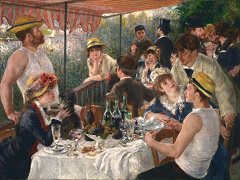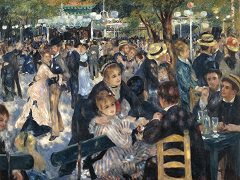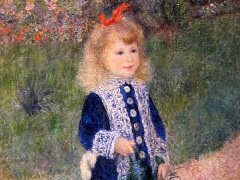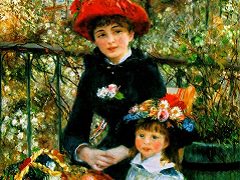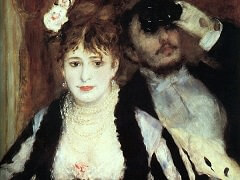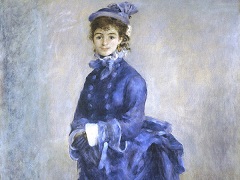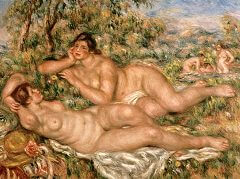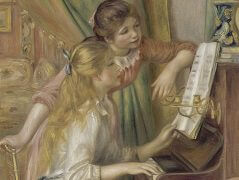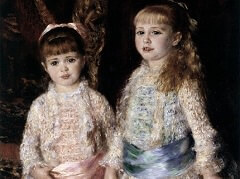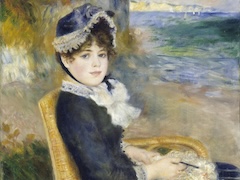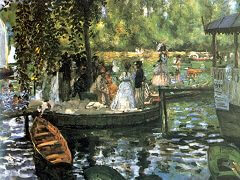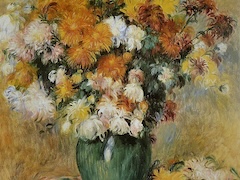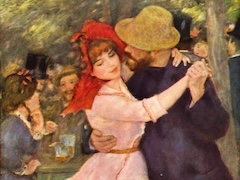The Umbrellas - by Pierre-Auguste Renoir
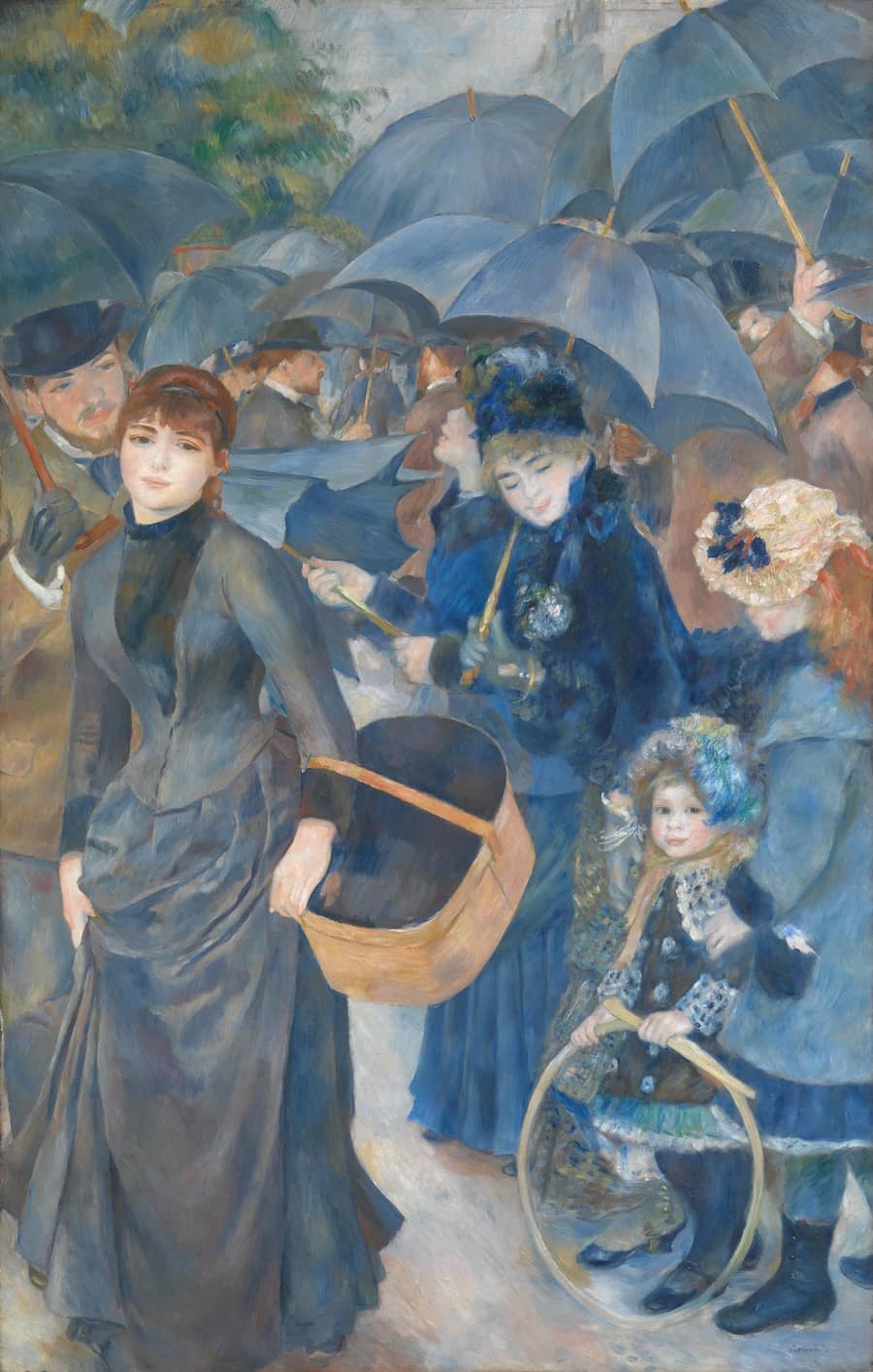
Someone has said that Renoir created a new mythology out of our poor humanity and endowed it with a sense of happiness. This picture, notable for its naturalness and exuberance, shows Renoir as the gentle, loving chronicler of everyday life. The busy commonplaces of existence captivate him, and under his brush the urban scene of his day is transfigured. To the familiar faces, forms, activities, he brings a radiance of joy.
It is a showery spring day in Paris, and all the world is outdoors. Perhaps another sprinkling threatens, if one may judge by the half-hidden creature in the center of the picture and by the gallant at the left who is willing to share his umbrella with the girl in the foreground. But if anyone is dismayed by weather, he does not appear in this picture.
A silvery gray-lavender is the major color, and within its narrow range, has an extraordinary variety. Against this is played a dull gold quality, with sharper blues and greens, and golden browns. And black. Always some spot of black, to make the ensemble sing.
Renoir delights in the curves of the umbrellas, and develops them throughout the picture: in the drawing of the girl in the foreground, in her bandbox, in the hoop, the children's bonnets, in the trees in the background.
The lovely midinette in front is surely one of the most winning figures ever painted. Drawn with beautiful simplicity, her lines reverberate in all parts of the composition.
In the right corner, Renoir has given us two doll-like youngsters of such charm as would justify a whole canvas devoted to them alone. They are united, through their color, drawing, and the playful enrichments of their costumes, to the two women in blue. To this portion of the canvas, Renoir has reserved small delights for the eye and his richest color.
Renoir at this time was entering upon his "sour period," and we can see what that term meant: an emphasis on edges, broader areas of color, a modeling like that in relief sculpture but with flattened faces; and distance achieved through line effects (as in the path into this picture). It is only the style that is tighter and drier; the joy of life, the transmutation into beauty of everything he touched - these are only the more in evidence.

